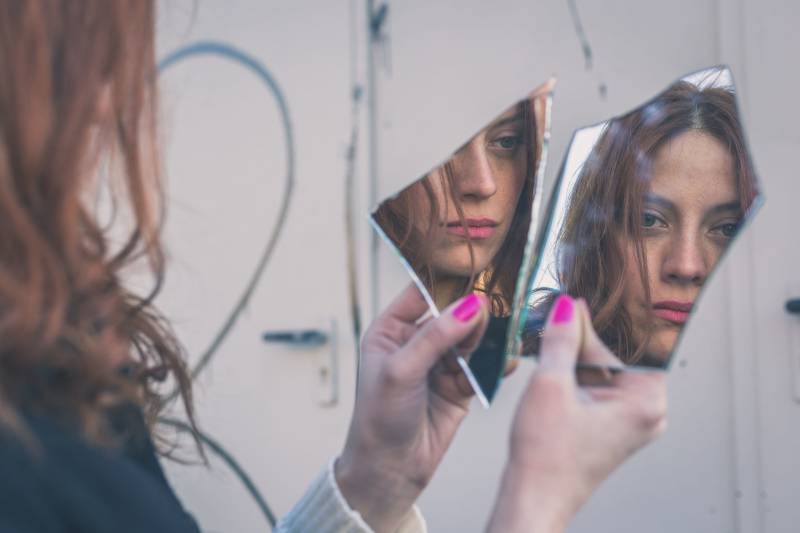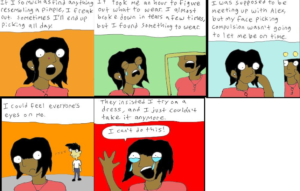
How would you define the word 'beautiful'? Every society that exists in this planet, has certain 'standards of beauty' one needs to meet so that his/her physical appearance is accepted by the community and if one fails to do so, he/she will be subject to bullying, negative comments and embarrassment. With the advent of social media applications like Snapchat or Instagram, the desire for a good physical appearance has grown that compels people to get plastic surgeries done and use Botox to meet beauty standards of photo filters.
There is a huge common misconception that only women are worried about their physical appearance. According to a national survey published by Psychology Today, 44 percent men out of 4000 respondents reported that they are dissatisfied with their overall appearance. For women, their self-disparagement was directed toward their abdomens (71 percent), body weight (66 percent), hips (60 percent), and muscle tone (58 percent); whereas men showed dissatisfaction towards their abdomens (63 percent), weight (52 percent), muscle tone (45 percent), overall appearance (43 percent), and chest (38 percent).
If the person’s concern regarding the physical appearance reaches a point where it begins to damage his/her well-being and ravages the physical, emotional, social and cognitive functioning of the patient, it leads to what is known in psychology as body dysmorphic disorder (BDD) or dysmorphophobia.
People with dysmorphophobia experience intrusive and recurrent thoughts that the particular organs of their body are disproportionate or deformed. They look at their distorted body parts for hours and engage in behaviours to improve or hide that defective part of their body. In order to change their physical appearance, they engage in rituals like starving, self-induced vomiting, excessive exercise, and abuse of purging drugs such as laxatives.
An article published in the journal “Dialogues in Clinical Neuroscience” by multiple renowned psychiatrists revealed that 40% of individuals with body dysmorphia think about the disliked body parts for 3 to 8 hours per day, and 25% think about them for more than 8 hours per day. As a result, they suffer from anxiety and depressive disorders, eating disorders, and substance use disorders. In their book “Kaplan & Sadock's Concise Textbook of Clinical Psychiatry”, Benjamin J. Sadock and Virginia A. Sadock stated that 90 percent of people with body dysmorphic disorder have major depressive disorder, about 70 percent have an anxiety disorder (often OCD), and 30 percent have experienced a psychotic disorder.
This comic below (edited and cropped because of relevance and space purposes), by Christine Deneweth of everydayfeminism.com beautifully encapsulates what is it like to live as a person who is not satisfied with his/her body.

Due to the fear of being ridiculed because of body, people avoid social activities and tend to become housebound. As Paul Bennett wrote in his book “Abnormal & Clinical Psychology an Introductory Textbook”, 80 percent of the sample of people with body dysmorphic disorder reported some degree of impairment in work, 39 per cent claimed not to have worked in the previous month as a result of their disorder.
Other statistics related to body dysmorphia showed that as many as one-fifth of people with body dysmorphia had thought of committing suicide and as many as a quarter had gone through a plastic surgery, whereas about 30 percent had attempted suicide.
In my opinion, individuals must not be targeted and teased for their appearance and there should not be any standards of beauty in the society whereby a person wants to modify his appearance to meet the beauty standards of community.
There is a huge common misconception that only women are worried about their physical appearance. According to a national survey published by Psychology Today, 44 percent men out of 4000 respondents reported that they are dissatisfied with their overall appearance. For women, their self-disparagement was directed toward their abdomens (71 percent), body weight (66 percent), hips (60 percent), and muscle tone (58 percent); whereas men showed dissatisfaction towards their abdomens (63 percent), weight (52 percent), muscle tone (45 percent), overall appearance (43 percent), and chest (38 percent).
If the person’s concern regarding the physical appearance reaches a point where it begins to damage his/her well-being and ravages the physical, emotional, social and cognitive functioning of the patient, it leads to what is known in psychology as body dysmorphic disorder (BDD) or dysmorphophobia.
People with dysmorphophobia experience intrusive and recurrent thoughts that the particular organs of their body are disproportionate or deformed. They look at their distorted body parts for hours and engage in behaviours to improve or hide that defective part of their body. In order to change their physical appearance, they engage in rituals like starving, self-induced vomiting, excessive exercise, and abuse of purging drugs such as laxatives.
An article published in the journal “Dialogues in Clinical Neuroscience” by multiple renowned psychiatrists revealed that 40% of individuals with body dysmorphia think about the disliked body parts for 3 to 8 hours per day, and 25% think about them for more than 8 hours per day. As a result, they suffer from anxiety and depressive disorders, eating disorders, and substance use disorders. In their book “Kaplan & Sadock's Concise Textbook of Clinical Psychiatry”, Benjamin J. Sadock and Virginia A. Sadock stated that 90 percent of people with body dysmorphic disorder have major depressive disorder, about 70 percent have an anxiety disorder (often OCD), and 30 percent have experienced a psychotic disorder.
This comic below (edited and cropped because of relevance and space purposes), by Christine Deneweth of everydayfeminism.com beautifully encapsulates what is it like to live as a person who is not satisfied with his/her body.

Due to the fear of being ridiculed because of body, people avoid social activities and tend to become housebound. As Paul Bennett wrote in his book “Abnormal & Clinical Psychology an Introductory Textbook”, 80 percent of the sample of people with body dysmorphic disorder reported some degree of impairment in work, 39 per cent claimed not to have worked in the previous month as a result of their disorder.
Other statistics related to body dysmorphia showed that as many as one-fifth of people with body dysmorphia had thought of committing suicide and as many as a quarter had gone through a plastic surgery, whereas about 30 percent had attempted suicide.
In my opinion, individuals must not be targeted and teased for their appearance and there should not be any standards of beauty in the society whereby a person wants to modify his appearance to meet the beauty standards of community.
